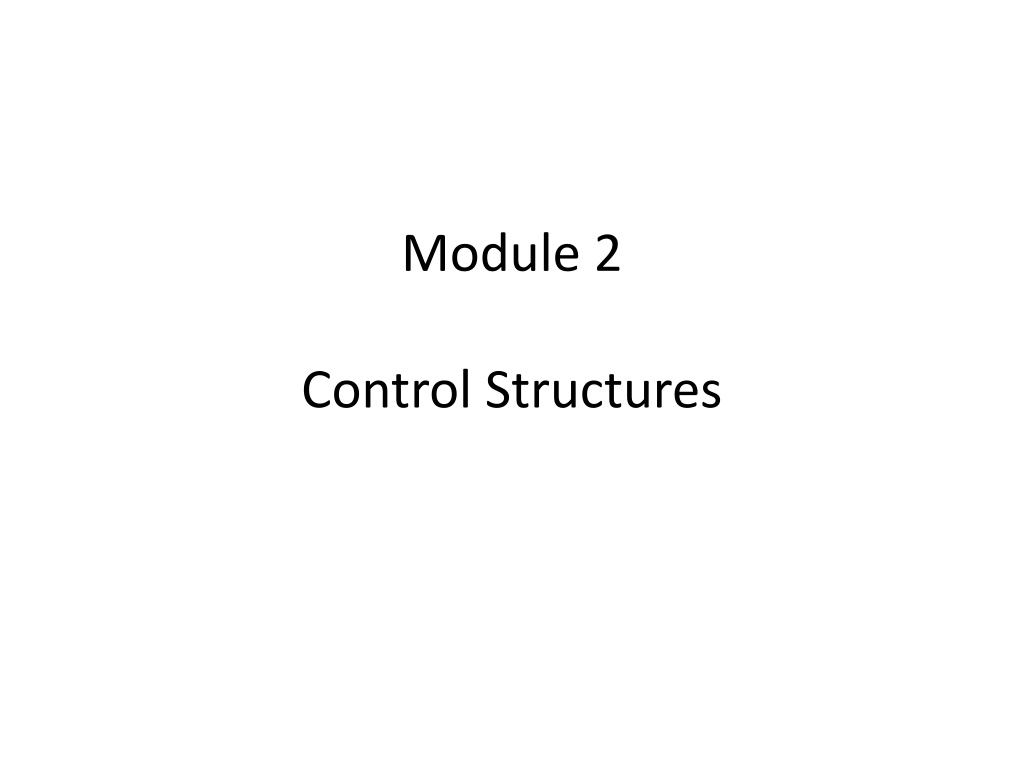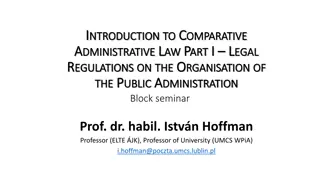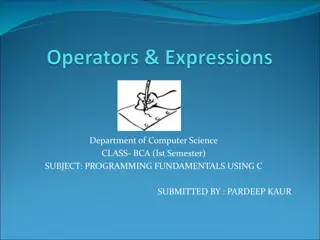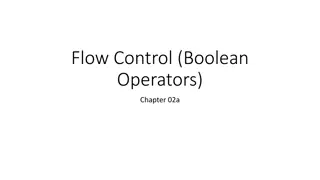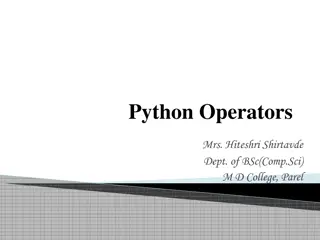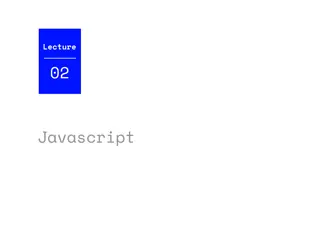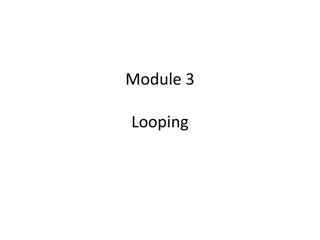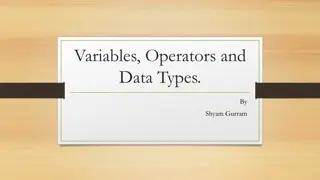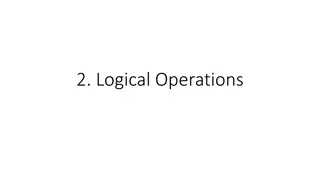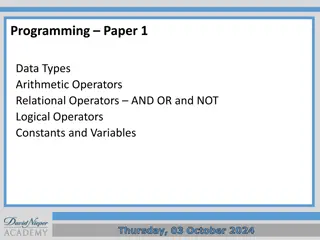Understanding Perl Control Structures and Comparison Operators
In Perl, comparison operators are used for standard comparisons, where Perl supports operators like greater than (>), less than (=), less than or equal to (
Download Presentation

Please find below an Image/Link to download the presentation.
The content on the website is provided AS IS for your information and personal use only. It may not be sold, licensed, or shared on other websites without obtaining consent from the author. Download presentation by click this link. If you encounter any issues during the download, it is possible that the publisher has removed the file from their server.
E N D
Presentation Transcript
Module 2 Control Structures
Comparison operators Perl supports the standard comparison operators: > greater than < less than >= greater than or equal to <= less than or equal to == exactly equal to != not equal to <=> Comparison with signed result
True and false In Perl, any condition that evaluate to false is assigned a value of zero. Anything that is non-zero is true. This applies to conditions in statements (such as the if you ll see in a moment) as well as for numeric evaluation: 0 false 3 true (non-zero) 5-5 false (evaluates to zero) 0.00 false (it s zero with precision) Null string is false String with a space or anything not null true is
The if statement Perl s if statement is similar to those of other high- level languages: if (condition) { do if true } else { do if false } The blocks of code can contain many statements. The else and its statements are optional. Only one block of code is executed, depending on whether the condition is true or false
Example of if A simple if statement is: if ( $num1 > 5 ) {print It is greater than 5. ;} else {print It is less than or equal to 5. ;} If there is only one statement in a block, you can leave the curly braces off as long as a semicolon is used, however many programmer use curly braces to make the code more readable
Exercise Write a program that rolls six dice, all with values between 1 and 6. Add up the result of the die. If the total is greater than 20, display a message that the user wins the game. If the total is not greater than 20, they lose. Modify the program to determine if the total die roll is odd or even and display the result
Nested if-elses The if statement can be nested within other if statements, either inside the blocks or as part of the else: if (cond1) { if (cond2) {statements}} else { if (cond3) { statements} else {statements} }
Exercise Write a program that generates three random numbers between 1 and 10. Display a message telling the user whether the sum of the three numbers is greater than, less than, or equal to 15. Also, tell the user whether the sum is even or odd.
Input from the keyboard The easiest way to get input into a Perl program is to read from the keyboard. To do this, use the <STDIN> structure (the standard input, or STDIN, is the keyboard by default). You use <STDIN> to read a value and store it in a variable like this: $var1=<STDIN>;
The chomp operator When reading input from the keyboard, the entire string entered by the user, including the RETURN is saved in the assigned variable If you want to eliminate the newline character at the end of the input, use the chomp operator to remove it: $str1=<STDIN>; chomp $str1; print You said . $str1 . . ; without the chomp operator, the print statement would have moved down a line at $str1
Exercise Write a program that randomly chooses a number between 1 and 100. Let the user enter a guess, and tell them whether they got the number correct, or whether the random number is higher or lower than the guessed number, and by how much. Only do this guess once.
String relationships There are relational operators for strings (actually, for non-numbers): eq equal to ne not equal to gt greater than lt less than ge greater than or equal to le less than or equal to Comparisons are left-to-right, using ASCII values
Example of string comparisons $str1= Hello ; $str2=<STDIN>; chomp $str2; if ($str1 eq $str2) {print You guessed the string!\n ;} else {print Wrong guess!\n ;}
Exercise Write a program that creates three different variables, all with names of animals assigned to them (one animal per variable). Display the three animals for the user. Have a random number generator pick one of the three animals, and ask the user to guess which animal was chosen. Let the user know whether they guessed correctly or not.
Boolean operators Perl supports to Boolean AND and OR operators in the same way as other high-level languages: && AND || OR These operators are often used for conditions: if (($num1 < 10) && ($num1 > 5)) Perl also allows the use of the words and and or : if ($num1 < 10 and $num1 > 5)
The NOT operator Perl allows the negation NOT operator to be specified either as ! or as the word not : if (($x < 5) && !($x > 0)) if ($x < 5 and not $x > 0) Boolean conditions are always evaluated left to right. Keep in mind some complex combinations may not make sense. Check the logic carefully with compound statements.
Exercise Write a program that asks the user for a number between 1 and 100. Check to see if the number is even or greater than 10. If it is, display a message to that effect. Also check to see if the number is between 15 and 25 and display a message showing the result.
The shortform if A shortform if statement is popular in Perl, and is applicable if there is only one statement that would reside inside the code block. Instead of writing: if (condition) {statement;} you can write: statement if (condition); This may look confusing, and many programmers do not use it, but it is legal
Example of shortform if This is an example of the shortform if statement: $flag = 1 if ($num1 > 10); This is the same as writing if ($num1 > 10) {$flag = 1;} Shortform ifs can only be used when a single statement is to be executed
The elsif construct Instead of using if-else structures to nest ifs, you can also use the shortform elsif. This removes the need for a set of curly braces for the else. Instead of writing: else { if (cond) {statements }} you can write: elsif (cond) {statements } The use of elsif simplifies the number of braces, but some find it awkward to read easily
Exercise Write a program that asks the user for the outside temperature in degrees Fahrenheit. Display the equivalent in degrees Celsius. The conversion formula is: F=32+9C/5 where F is degrees Fahrenheit and C is degrees Celsius. Then, if the temperature is going to be below 40F tell the user to take a coat. If the temperature is above 80F tell them to avoid sunburn. If it s in between, tell them it will be a great day!
